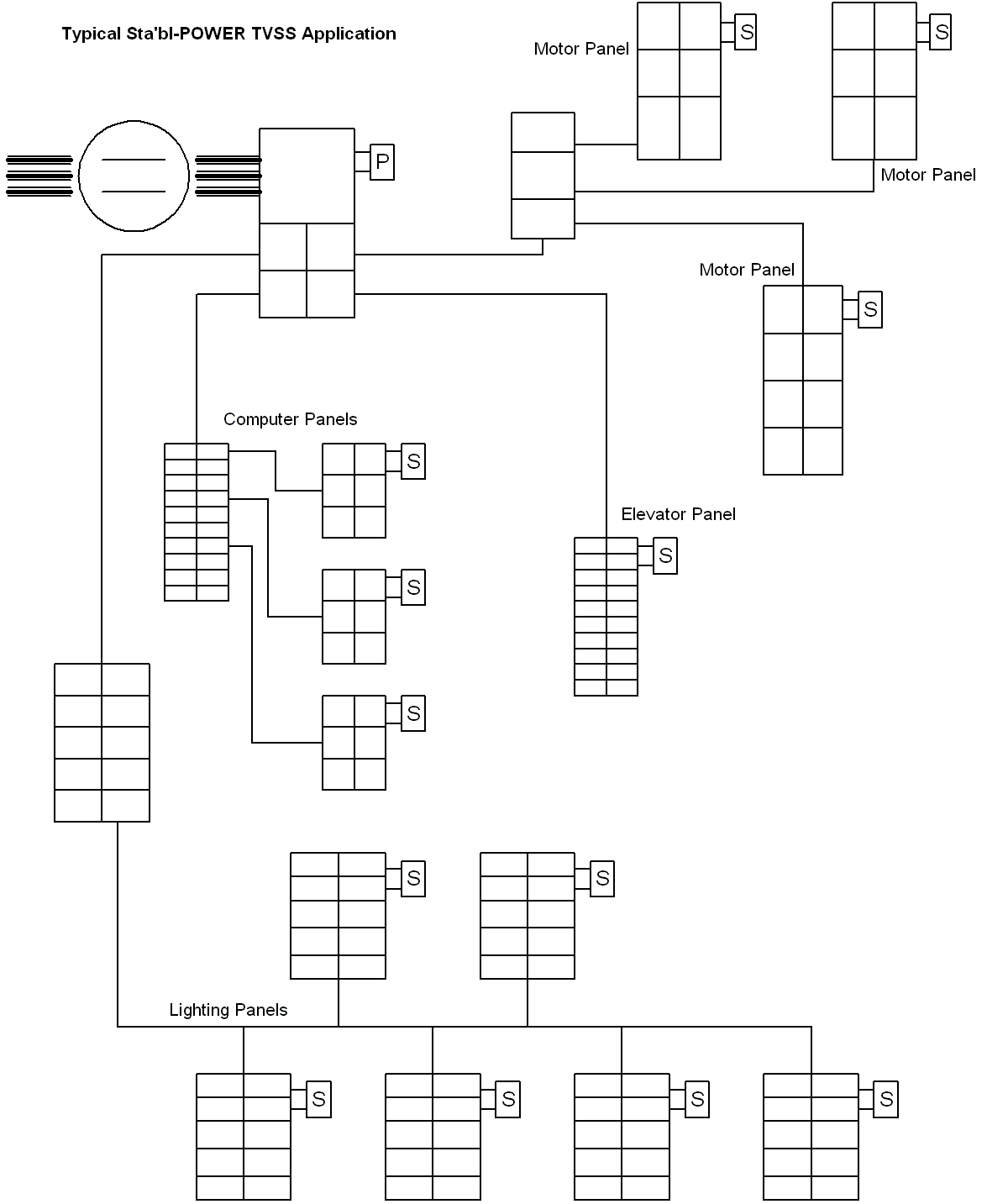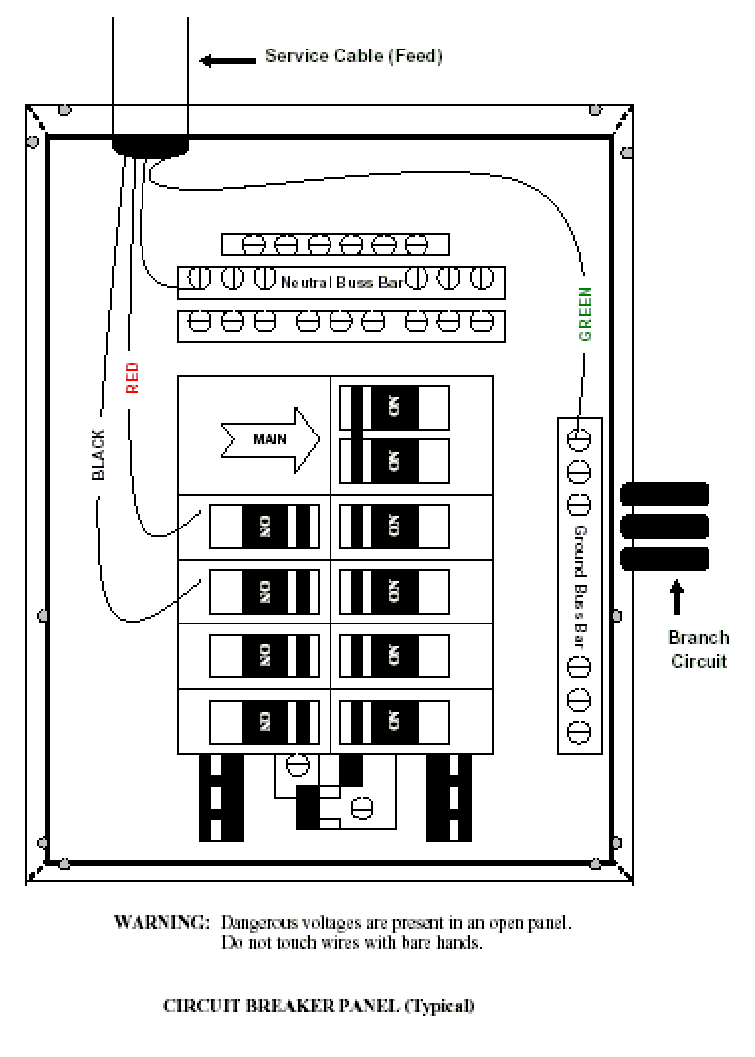|
|
 |
INTERSTATE ASSESSMENT TECHNOLOGIES
2435 E. Pecan Rd.
Phoenix, AZ 85040 |
|
602.438.6070 |
602.305.6996 (fax) |
[Back]

Transient Voltage Surge Suppressor (TVSS)

   

The “Top 10” Lifetime Benefits
Of Your Sta’bl-POWER™ Power Integrity System!
-
Promotes
Greater Operating Efficiency of Air Conditioners, Refrigeration,
Appliances, and Wiring, by Lowering Operating Temperature Buildup.
-
Extends the
Life of Electrical Appliances and Electronic Equipment.
-
Improves
Performance & Reduces Equipment Malfunction and Downtime.
-
Reduces
Maintenance Calls and Resulting Replacement Costs.
-
Extends the
Life of Lamps and Ballasts, Greatly Reducing the Frequency of Ballast
and Bulb Replacement.
-
Protects
Computers & POS Systems Against
Hard-drive Crashes and Lost Data.
-
Protects Your
Entire Electrical System from Lightning and Power Surges, Which Can
Originate From Internal and/or External Sources.
-
May Reduce
Insurance Costs by Reducing The Risk of Lost Data and Equipment.
-
Promotes
Greater Overall Reliability and Operating Efficiency of Total system.
-
Provides both
“Catastrophic” and “Preventative” Protection of
All Electronics, Computer & Telecom Systems and Your Most
Sensitive Equipment.

16
Important Variables That Affect Your Sta’bl-POWER™
Savings & Benefits!
Upon
installation of your Sta’bl-POWER™,
the overall improvement in efficiency and reliability of your
electrical system will be in proportion to the impact of the
following important variables, which may adversely affect your power.
All electrical systems share these in common! Your actual, long
term, combined savings will be impacted by the unique combination of
variables at your site. Consider the following conditions:
-
Age, type,
and condition of site wiring and equipment
-
Overloading
of wiring & equipment
-
Integrity and
maintenance of system grounding
-
Percentage of
kilowatt hours used for inductive vs. resistive loads
-
Site power
factor or actual power factor at major load device
-
Local
climatic and environmental changes
-
Distance from
source and adequacy of available power
-
Frequency of
on-site brownouts and blackouts
-
Impact of
concealed deterioration of failure of motors
-
Actual cost
of electricity and cost of on-site maintenance
-
Changes in
volume of business or operations
-
Cost of
downtime of equipment vs. operational throughput
-
The amount,
type, and quality of nearby or neighboring equipment
-
Frequency of
Power Co. Interruptions and load adjusting
-
Frequency of
electrical storms, and distant lightning phenomenon
-
Impact of
regional power demand & load shifting

Power Line
Disturbances and Your Power Bill
By Dr. C. W. Simmonds
INTRODUCTION:
The efficient
use of electrical energy is important to everyone. This is true from
the standpoint of economy as well as conservation. In 1975, the
total electrical energy sold to ultimate customers by both public and
private utilities in the U.S. was 1733 billion-kilowatt hours
(kWh). The revenue paid to the utilities by their customer for
this energy was $46.9 billion dollars. From figures such as
those, we can see that even a modest
5% improvement in efficiency in the use of this energy could save
over
$2.3 billion dollars!
We will show that
disturbances in the normal line voltage known as voltage
transients, generated mainly by switching loads on and off, cause
inefficiencies in electrical equipment and over-registration of the
induction kilowatt-hour meters commonly used to measure energy to
such loads.
VOLTAGE TRANSIENTS:
Sudden, short-duration,
high-amplitude disturbances in the normal voltage levels across power
Lines are called voltage transients. Although some of these voltage
transients are caused by lightning, most are caused by the switching
on and off of internal and external loads, and occur regularly on any
power system. On residential 120 VAC Lines. These voltage transients
can peak momentarily at 6000 volts when caused by Lightning, and at
2500 volts where caused by switching.
Such transients constitute a
form of 'electrical pollution' which is present in every
power system in varying degrees. The raw at which voltage transients
occur' is described in one article as from
0 to 900 transients per hour for one residence, 900 to 9000
transients per hour for a busy office, 9000w 60,000 transients per
hour for a small factory, 60,000 to 181,000 transients per hour for a
processing plant, and 180,000 to 432,000 transients per hour where
heavy switching with SCR's and traces occurs.
The shape of a typical
voltage transient described in reference 3 oscillatory, having the
appearance of a damped sine wave, and a period of approximately 6.5
microseconds, becoming
damped out alter
about three cycles.
Such voltage transients occur
whenever inductive loads such as transformers
and motors are switched, and result from the sudden dissipation of
instantaneous stored magnetic energy into the rest of the system.
EFFECT
OF VOLTAGE TRANSIENTS:
The voltage transients
described above are present in any power system. They can be harmful
and expensive in three ways:
-
They can damage solid state
control equipment, where semiconductor devices may break down and
conduct avalanche currents.
-
Evidence is offered in
reference 4 that supports the theory that such transients, being high
frequency in nature, partially immobilize the magnetic Systems of
common devices such as transformer
and motors causing them to operate with excessive hysteresis and
eddy-current losses. This reduces their normal efficiency and results
in wasted energy and a higher power bill.
-
Finally, evidence is offered
below to support the theory that such voltage transients cause the
induction watt-hour meters that commonly monitor electrical loads to over-register.
TRANSIENT VOLTAGE SUPPRESSORS:
As long as the present type
of induction watt-hour meter is used, there is no known remedy for
over-registration due to intermittent loading. However,
over-registration and overcharges due to voltage transient whether
it’s transient-induced inefficiency or varying torque on the
disk of the watt-hour meter can be drastically reduced by transient
voltage suppressors. Such transient voltage suppressors can be
made to suppress voltage transients with response time less than 50
nanoseconds, protecting equipment and the watt-hour meter itself from
such disturbance, and saving the customer money that would go to pay
for unnecessarily higher readings.


"Spike suppressors are the simplest, least expensive of the
power conditioning devices and easily the most effective."
(PG&E, "Power Quality in Your Home)
"Overvoltage transients can be present in all electrical
systems, but are more severe in industrial power
systems......Overvoltage transients may occur thousands of times per hour.
(ELECTRICAL DESIGN Magazine)
"Research indicates that transient activity is a phenomenon of
greater magnitude than is usually accepted"
(ENERGY USER NEWS)
"The worst case of transient activity measured was 648,000 per
hour.....on a dimmer panel that controlled 24 fluorescent fixtures in
a college lecture hall."
(ENERGY USER NEWS)
"Spikes or transients are a sharp, sudden rise in voltage and
can cause the most physical damage to sensitive electronics.
The power can jump up to a few thousand volts over the normal 120 volts..."
"...They happen so fast you wouldn't even see a flicker.
To electronic devices it's like hitting a speed-bump at forty miles
an hour with bad shocks."
"...Their effects include false readings, equipment damage, or
loss of information in PC's."
(PE&E, "Power Quality in Your Home")
"IEEE studies show that many transients on the ordinary 120v
power line have voltages up to 5600V. The average industrial or
commercial circuit receives many transients daily in excess of 300V."
(GENERAL ELECTRIC, "Technical Data")
"2500 to 6500V transients are high enough to cause severe damage"
(GENERAL ELECTRIC, "Technical Data")
"Last, but certainly not least, is the damaging effect
transients have on power consumption. The cumulative effects
imposed upon contacts, coils, semiconductors, etc., by transients
cause efficiency loss on the motors, lighting, and appliances served
by electricity."
(GENERAL ELECTRIC, "Technical Data")
"In reality, the businessman probably saves far more as a result
of the protection afforded to his electrical system through the use
of suppression equipment. This protection can dramatically
reduce maintenance costs and increase the life expectancy of motors,
relays, and other equipment."
(GENERAL ELECTRIC, "Technical Data")
"The most common types of power disturbances are: 1) No Voltage
2) Low Voltage 3) Transients 4) Noise."
"........Surge suppressors are the simplest and least expensive
buffering devices."
(SOUTHERN CALIFORNIA EDISON, "Some Important
Facts about Power System Disturbances)
[Who
Needs Surge Protection] [Transients
Hike Usage] [Problem-Solving
Resource]
[Control
Circuit Transients] [Effects
of Transients] |




